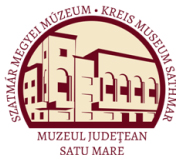Marta, Liviu: The Late Bronze Age Settlements of Petea-Csengersima (Satu Mare, 2009)
VI. Annexes
S9 Complex la (Fig. 3, 5) — A partially excavated pit that had an irregular arched oudine (223 x 312 cm). The walls were asymmetrical, varying from sloping to steeply inclined towards the inside; uneven base. The maximum depth was 42 cm. Its fill was black, like the fill of the cultural layer in which it was cut. Inventory: 9 small pottery fragments that originated from 5 vessels and a piece of daub. It was not assigned to an archaeological culture. S9 Complex lb (Fig. 3, 5) — A pit with quasi-circular outline (142 x 150 cm), cylindrical shape and with an arched step in its eastern side. Its base was flat and laid 58 cm under the outline. The fill was dark, like the cultural layer in which it was cut. Inventory: 10 pottery fragments and a large quantity of daub (approximately 20 kg). Among the pottery fragments that originated from 8 vessels, there was one fragment with 2 incised lines and also another one with black outside and brick red coloured inside. The last pottery fragment suggests the pit could be assigned to the Lăpuş II—Gáva I horizon. Pottery shape Paste Decoration type lottery type No. of elements Plate cup s IB 1 11/1 f ÍB 1 11/2 amphora c GB 2 1 11/3 S9 Complex lc (Fig. 3, 5) — A pit with semi-oval oudine, with uneven walls and uneven base in three steps that went down from north to south (-15 cm, -25 cm, -30 cm). The fill was black, as well as the cultural layer in which it was cut. Inventory: 72 pottery fragments, 66 pieces of daub, portable cooking vessel shards. Most of the pottery fragments were atypical; there was a fragment with excised, spiral decoration (PI. 11/2). Two fragments of an amphora with wide fluting indicated that they were assigned to the Lăpuş II—Gáva I horizon. S9 Complex 2 (Fig. 3, 5). — A pit with irregular, quasi-oval outline (203 x 145 cm) was delimited by the cultural layer ( 84 cm). The walls were steep, except the eastern side, where a step was uncovered in 20 cm depth. The base was convex and was 45 cm deep under the outline. Its fill was dark, like the cultural layer in which it was cut. Inventory: 58 pottery fragments, 8 pieces of daub, one large fragment of a grinding stone, one shard of a polishing stone. Pottery fragments originated from 13 vessels. Date/culture: Lăpuş II—Gáva I. Pottery shape Paste Decoration type Pottery type No. of elements Plate cup f 6? 1 11/4 amphora s BG 1 11/5 dish s EA lAc 1 11/6 s GC 1 dish s 2Ab 1 pot c 1 S9 Complex 3 (Fig. 3, 5) — A pit lied in the confines of the sector and thus was partially excavated. It had a quasi-oval outline. It occurred below the cultural layer in 85 cm depth. The walls went down 25 cm steeply inclined towards the inside. The base was flat and the fill was grey. Another pit that contained the same fill was uncovered on the east side of the former pit, and went down from the first one with 45 cm. The cultural layer and Complex 4 superimposed pit Complex 3. Inventory: a small fragment of corroded bronze, 76 pottery fragments that originated from at least 13 vessels, fragments of animal bones. 5 pottery fragments had incised-excised decorations and they originated from 3 vessels (one of them had shiny black outside and light brown inside). Date/culture: Suciu de Sus. Pottery shape Paste Decoration type Pottery typeNo. of elements Plate pot s 2A 1 11/7 amphora s HK 1 11/8 dish s BB 1 11/9 s GA 1 11/10 s AA 1
